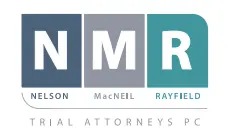Prescription drug usage is ubiquitous in the United States. Every time we turn on the television, it seems like there is a commercial with an amazingly happy person lucky enough to take the advertised medication. In fact, Consumer Reports reported in 2017 that more than half of American adults take prescription medication, and that, on average, those adults take four medications.
Moreover, these numbers have grown dramatically over time and exceed by far the number of adults taking medications in other countries.
Of course, Americans are lucky to live in a time when medical science and pharmacology can assist them in treating more illnesses and diseases than ever before. But, unfortunately, many medications are misused in a variety of ways.
A perfect example is the development of opioids and the massive addiction and misuse that followed, leading to America’s opioid epidemic. Another problem that has developed is “drug diversion.” In this blog, we will explain what that means, some ways it happens, and some of the harms that can result.
What Is Drug Diversion?
While there are variations in how organizations define “drug diversion,” it essentially refers to the improper distribution of a legally prescribed drug to a person for whom it was not prescribed, or the use of the drug in a way that was not intended. There are many examples; some may strike you as more inappropriate than others.
For example, one family member taking a drug prescribed for another family member would actually constitute drug diversion because a legitimate prescription drug is only supposed to be taken by the person for whom it is prescribed. This is a common example of abuse of prescription drugs.
Other examples of prescription drug diversion involve people working in the healthcare industry. For example, a pharmacist or other healthcare professional in a pharmacy may illegally divert drugs for the employee’s or others’ use. Sometimes, this person sells these pharmaceutical drugs illegally to outside buyers who are looking to use or distribute the substance themselves.
In cases of drug diversion in healthcare, especially in the context of opioids, this practice is called ‘doctor shopping’. ‘Doctor shoppers’ peruse drug cabinets for substances to either take themselves or distribute to others.
Similarly, nurses or other healthcare providers may divert drugs to themselves, another patient to whom the medication is not prescribed, or an external source – whether that be street dealers, criminal enterprises, or even just a friend of theirs.
How Bad Is the Problem?
Relias Media, a healthcare information source, reports that hospital drug diversion constantly affects patient safety. Unfortunately, the company further notes that the problem has not improved.
Sometimes, even when drug diverters are discovered in one medical facility, they simply take a new job at a different facility and return to their bad habits. The diversion problem worsened during the pandemic when there were such massive shortages of healthcare workers.
Are There Risks to Healthcare Patients?
A profit motive drives some drug diversion. For example, a person may want to steal and sell drugs on the black market. In other instances, the person diverting the drug does it because they simply want to use it personally. But what about patients – can they be endangered by prescription drug diversion? According to the Centers for Disease Control and Prevention (CDC), the answer is “yes.” The CDC gives several examples:
- First, healthcare workers who divert drugs sometimes use them while working. The worker’s patient is now at risk of receiving substandard care from an impaired healthcare worker. Obviously, harm can result.
- Second, the drugs are sometimes diverted from a patient who should have received them. In other words, a healthcare provider or employee may steal medicine that is supposed to be given to the patient. Obviously, harm can result.
- Another example cited by the CDC is the risk of infection that arises when the drug diverter tampers with injectable drugs.
The CDC has been involved in investigations of infection outbreaks due to such injectable drug tampering. There are dozens of regulatory agencies in place who seek to identify and stop the diversion of prescription drugs everywhere, from healthcare organizations to retail pharmacies. However,
Call with Questions
Drug diversion is a serious problem. It can lead to criminal prosecution, and causes harm to persons who are addicted to drugs – or to people who were simply caught in the crossfire. You will likely have questions about your legal rights in the event of injury in a Portland, Albany, or Corvallis, Oregon, hospital or medical setting due to drug diversion.
The experienced Medical Malpractice and Personal Injury attorneys at Nelson MacNeil Rayfield are here to answer them. Please give us a call to schedule a free consultation. We strongly believe that the best way to make society safer is by holding people accountable for their negligent and wrongful actions. Please, contact us today for a free consultation, where we’ll answer your questions about drug diversion or any other medical malpractice personal injury issue you may be experiencing.
